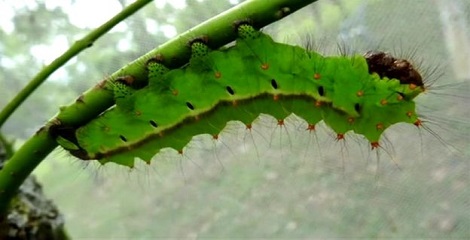Researchers at a university in Britain have developed viruses that could halt the decline of “Muga” caterpillar in India which produces one of the finest silks in the world.
- Muga caterpillars produce a highly valuable silk are dying from bacterial infections in Assam.
- Muga silk is produced only in the North East India as the silkworms form their cocoons. The caterpillars have been in decline over the last few years because they are eating infected leaves.
- The newly developed viruses could protect the silkworms from disease and as a result could save the Muga silk industry.
 Apart from silk trade, Assam is known for its tea and farmers often spray pesticides to protect the tea leaves-these sprays are thought to have reached the silkworms and have weakened them.
Apart from silk trade, Assam is known for its tea and farmers often spray pesticides to protect the tea leaves-these sprays are thought to have reached the silkworms and have weakened them.
- They have found that the consumption of phages (viruses) by caterpillars is a very effective method of preventing bacterial diseases.
- The university claims if the research works on Muga caterpillars, thousands of farmers in India would benefit.
Muga silk features
- It is golden in colour, with a glossy and fine texture
- The silk can be hand-washed with its lustre increasing after every wash
- Very often the silk outlives its owner
Key
India is the second largest producer of silk in the world after China. About 97% of the raw silk comes from five Indian states, namely, Andhra Pradesh, Karnataka, Jammu and Kashmir, Tamil Nadu and West Bengal.
AffairsCloud Recommends Oliveboard Mock Test
AffairsCloud Ebook - Support Us to Grow
Govt Jobs by Category
Bank Jobs Notification




